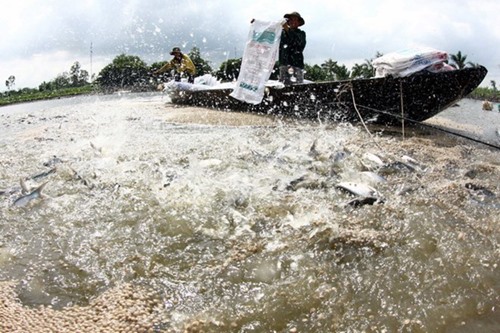Plan for management of antibiotic use in farming
 |
| Photo for illustration. The efficacy of antibiotics has been hampered by the development of resistancein bacteria originating from humans, animals, food and the environment.Infections due to antibiotic-resistant bacteria have led to treatment failures, poor clinical outcomes and deaths.-VNA/VNS Photo |
With financial support from the United States Agency for International Development, this plan was developed in collaboration with the Food and Agriculture Organisation of the United Nations (FAO) to guide the actions of the agriculture sector and complement the Ministry of Health’s national action plan on combating drug resistance in the 2013-20 period
The implementation of the plan is expected to help mitigate the public health risk arising from antibiotic usage in livestock production and aquaculture in Việt Nam.
The action plan establishes five specific objectives, including review, revise and enforce policy implementation and governance related to antibiotic use (AMU) and antibiotic resistance (AMR) in livestock production and aquaculture.
It also, as expected, helps to increase awareness on AMU and the risk of AMR occurrence among food and agriculture professionals, producers and consumers or implement good practices in animal treatment, animal feed production, livestock husbandry and aquaculture.
Deputy Minister of Agriculture Vũ Văn Tám said the popular use of antibiotics in livestock production and aquaculture had led to the presence of antibiotic resistant bacteria in cattle, poultry and aquaculture.
Tám said it was important to have cooperation and technical and financial assistance from agencies, international organisations, research institutes and the private sector to reduce antibiotic use and mitigate antibiotic resistant threats.
“Together we are stronger against antibiotic use,” Tám said.
Jong Ha Bae, FAO’s representative, said “Antibiotic resistance threatens the health and livelihoods of the people in Việt Nam, the sustainability of food and agriculture production systems and the environment. Farmers, veterinarians and animal drug sellers should share responsibility by using antibiotic agents more responsibly and find alternative ways to maintain animal health and productivity such as improving bio-security and farming practices.”
Antibiotics can kill or inhibit the growth of micro-organisms such as bacteria, fungi or protozoa. They have been extensively used in recent decades and led to extraordinary improvements in human and veterinary medicine. Being an essential tool to control infectious diseases, they have also contributed to the improvement of food security, food safety and animal welfare.
However, the efficacy of antibiotics has been hampered by the development of resistance in bacteria originating from humans, animals, food and the environment. Infections due to antibiotic-resistant bacteria have led to treatment failures, poor clinical outcomes and deaths.
What the stars mean:
★ Poor ★ ★ Promising ★★★ Good ★★★★ Very good ★★★★★ Exceptional
Latest News
More News
- New initiative to boost the fight against domestic violence (November 26, 2025 | 10:00)
- South Korea funds IOM relief for Vietnam’s typhoon-affected communities (November 24, 2025 | 15:33)
- AI and human-centred values set to shape the future of HR in Vietnam (November 21, 2025 | 18:04)
- Kimberly-Clark and UNICEF strengthen child and maternal healthcare (November 17, 2025 | 18:08)
- Nestlé expands support for education and active lifestyles in Vietnam (November 17, 2025 | 17:52)
- Swing for the Kids Foundation supports school upgrades in Nghe An’s Do Luong district (November 16, 2025 | 10:00)
- Australia provides further $520,000 in typhoon aid to Vietnam (November 14, 2025 | 17:47)
- EU boosts emergency aid after Typhoon Kalmaegi (November 14, 2025 | 17:42)
- Pfizer Vietnam hosts symposia on pediatric pneumococcal disease (November 14, 2025 | 09:00)
- University of Medicine and Pharmacy develops vaccinology postgrad course (November 11, 2025 | 17:15)

















 Mobile Version
Mobile Version